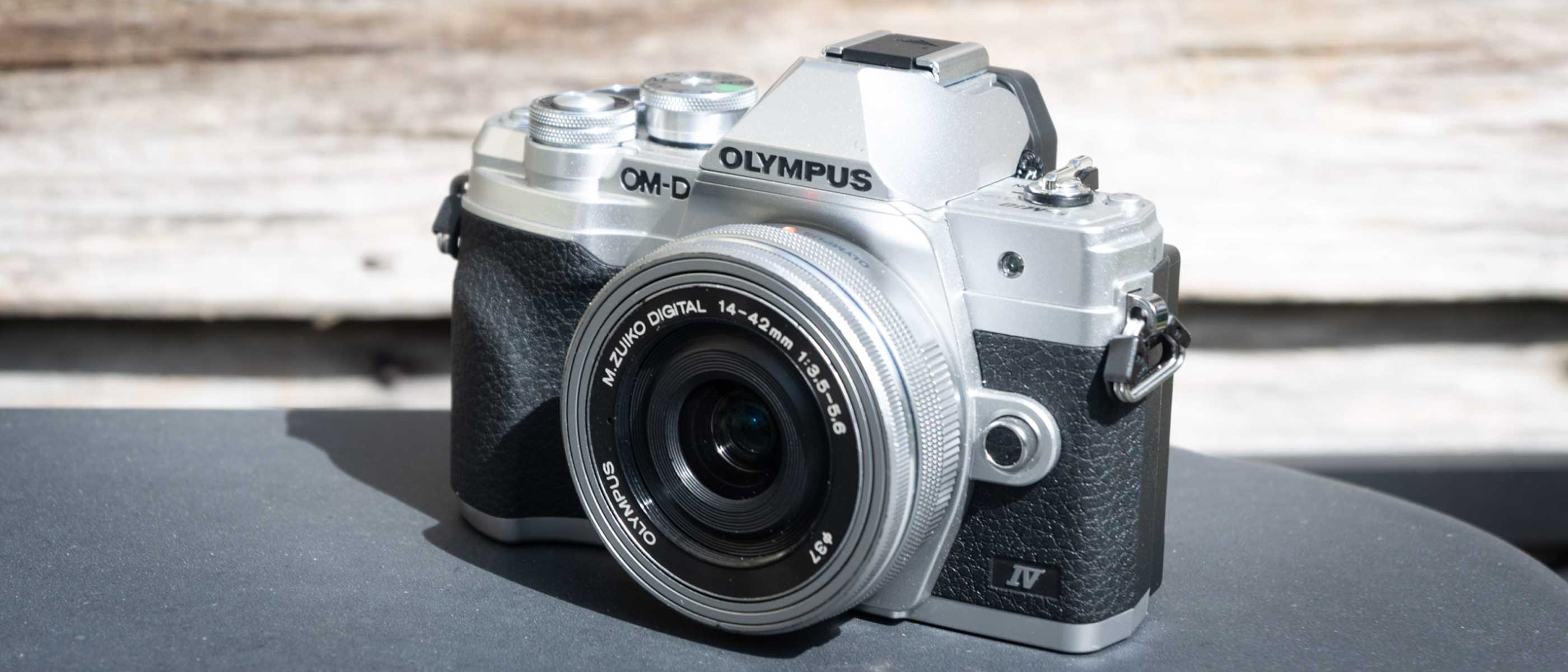Space Verdict
A small, lightweight camera that offers a great balance between usability, quality and an easy-to-understand, beginner-friendly interface. New updates to the system, including a revised autofocus system and an uprated sensor mean that the Mark IV is future-proofed and offers excellent quality for people who need a simple setup for everyday use. Highly recommended.
Pros
- +
Incredibly lightweight and portable
- +
New AF system is fast and works well
- +
Uprated sensor provides excellent quality for everyday use
Cons
- -
Videographers will be disappointed by the lack of a mic port
- -
Plastic feel reduces weight but doesn't feel 'premium'
- -
More experienced photographers may get frustrated quickly
Why you can trust Space.com
The third incarnation of this beginner-friendly point and shoot was critically acclaimed, and found favour amongst backpackers and those who travel light thanks to its incredible portability and 'one stop shop' approach to image taking. The fourth version looks to build on the success of previous generations and includes some favourable upgrades.
20MP Live MOS Sensor (Four-Thirds)
5-axis in-body stabilisation
WiFi and Bluetooth capability
USB Charging
121-point AF system with contrast detect
Flip-down, responsive touchscreen display
The Olympus OM-D E-M10 Mark IV brings a good deal to the table — including an improved sensor, better autofocus and a more precise and refined package that could well set the bar for people making the jump from cheaper cameras and a smartphone-centric approach.
In this review, we'll have a look at the camera's recent updates, where it sits in the market and some highlight features.
Olympus OM-D E-M10 Mark IV: Design
- Lightweight design aids portability
- Diminutive size will add to travel appeal
- Chunky controls are always to hand
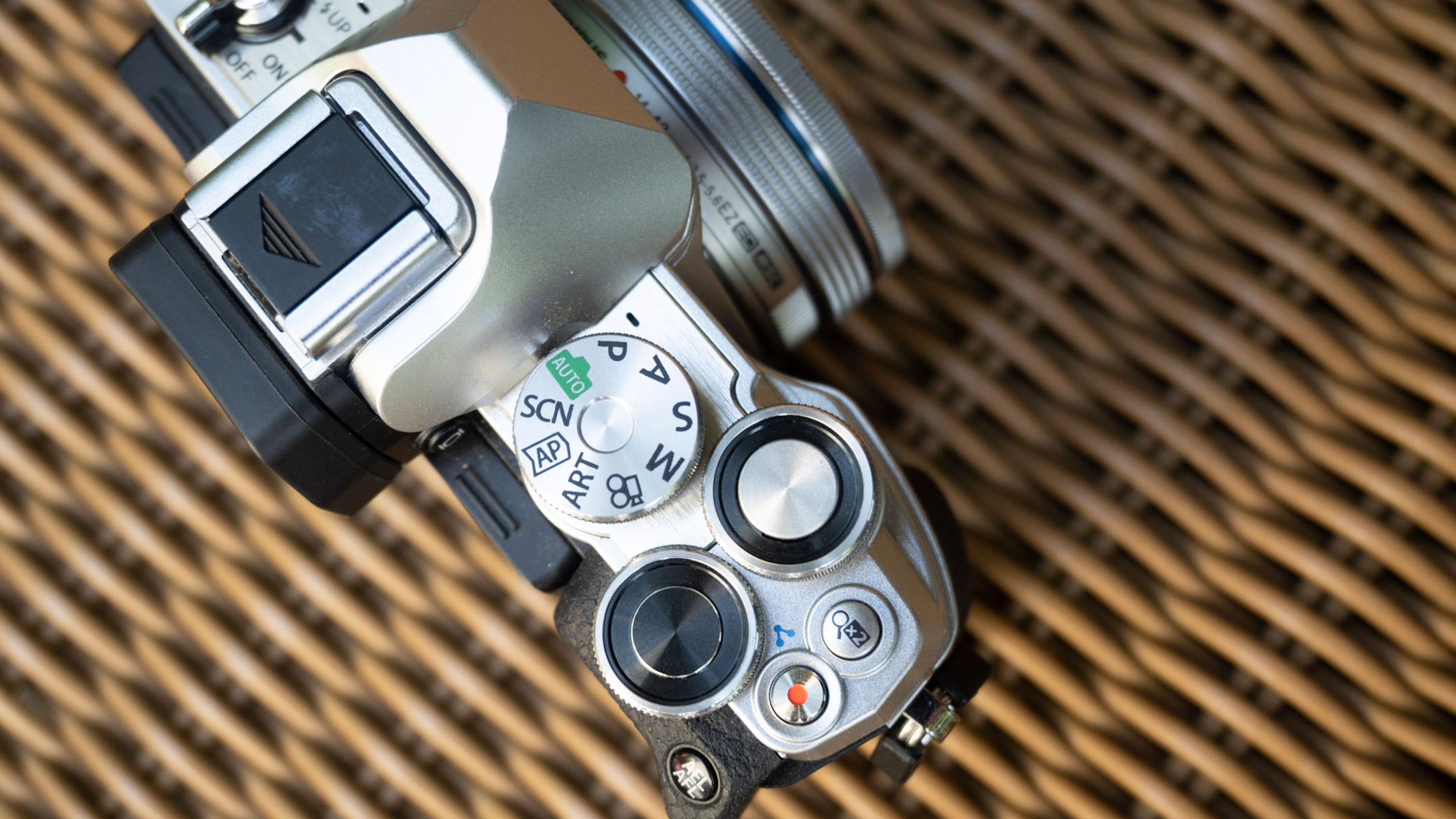
Compared to most other entry-level, beginner-friendly cameras we've tested recently, the Olympus OM-D E-M10 Mark IV is tiny. From a design perspective, it may be diminutive, but Olympus has managed to pack a fair bit of pleasing ergonomics into this version of their successful model.
For a camera that nearly fits into the palm of the hand, it's got a pleasingly chunky feel to it, aided by a useful and well-sculpted right-hand grip that means one-handed operation is feasible. Echoing a trend for designs on small cameras that hark back to a previous era, the black and silver color approach is akin to the brand's famous Olympus Trip 35mm film model, one of the world's most recognizable cameras. It's clearly in the same vein that the E-M10 Mark IV is based - we think that's no bad thing.
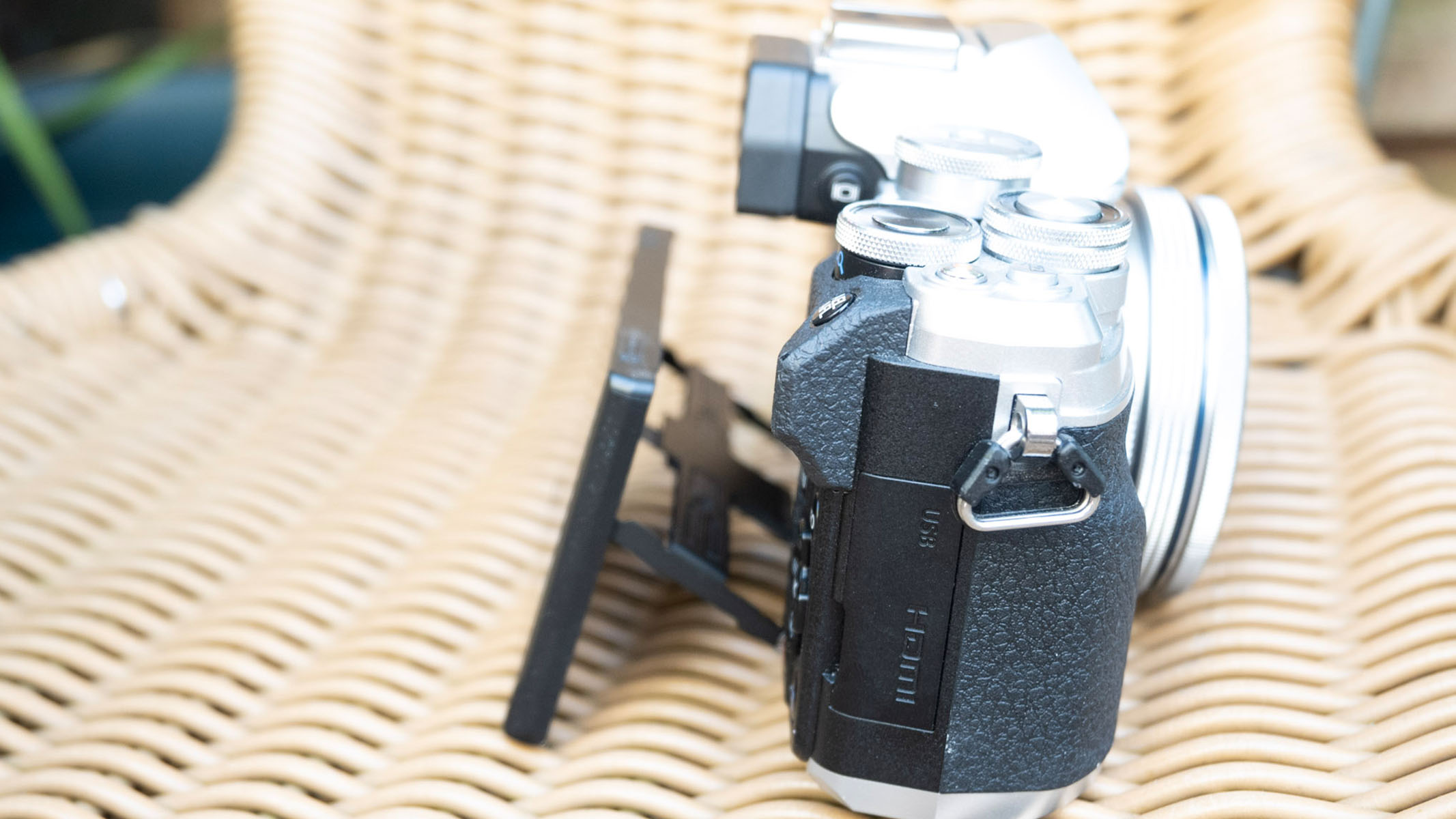
On the top of the camera, although they feel slightly plastic-y to the touch, the chunky dials and retro-inspired circulator selectors sit quite proud of the top of the body - with nice textured surfaces they, again, are easily operated with one hand and have a firm and reassuring action to them. The spring-loaded on/off switch and mode selector dials don't exactly ultimately feel particularly premium, but for a camera at this price point and aimed at beginner photographers, we can't really mark it down for this.
At the back, the expandable, tilting and extending screen are particularly noteworthy, even if we would have liked to have seen it swing out too. For travel photographers, content creators and those looking to snap lots of 'top down' shots, we'd imagine this feature would be especially useful as this piece of design significantly aids shooting at unusual or acute angles.
Olympus OM-D E-M10 Mark IV: Performance
- Revised autofocus claims to improve tracking of moving subjects
- New Micro Four-Thirds 20MP adds much to the overall image quality
- 5-axis image stabilization is a welcome addition for vloggers
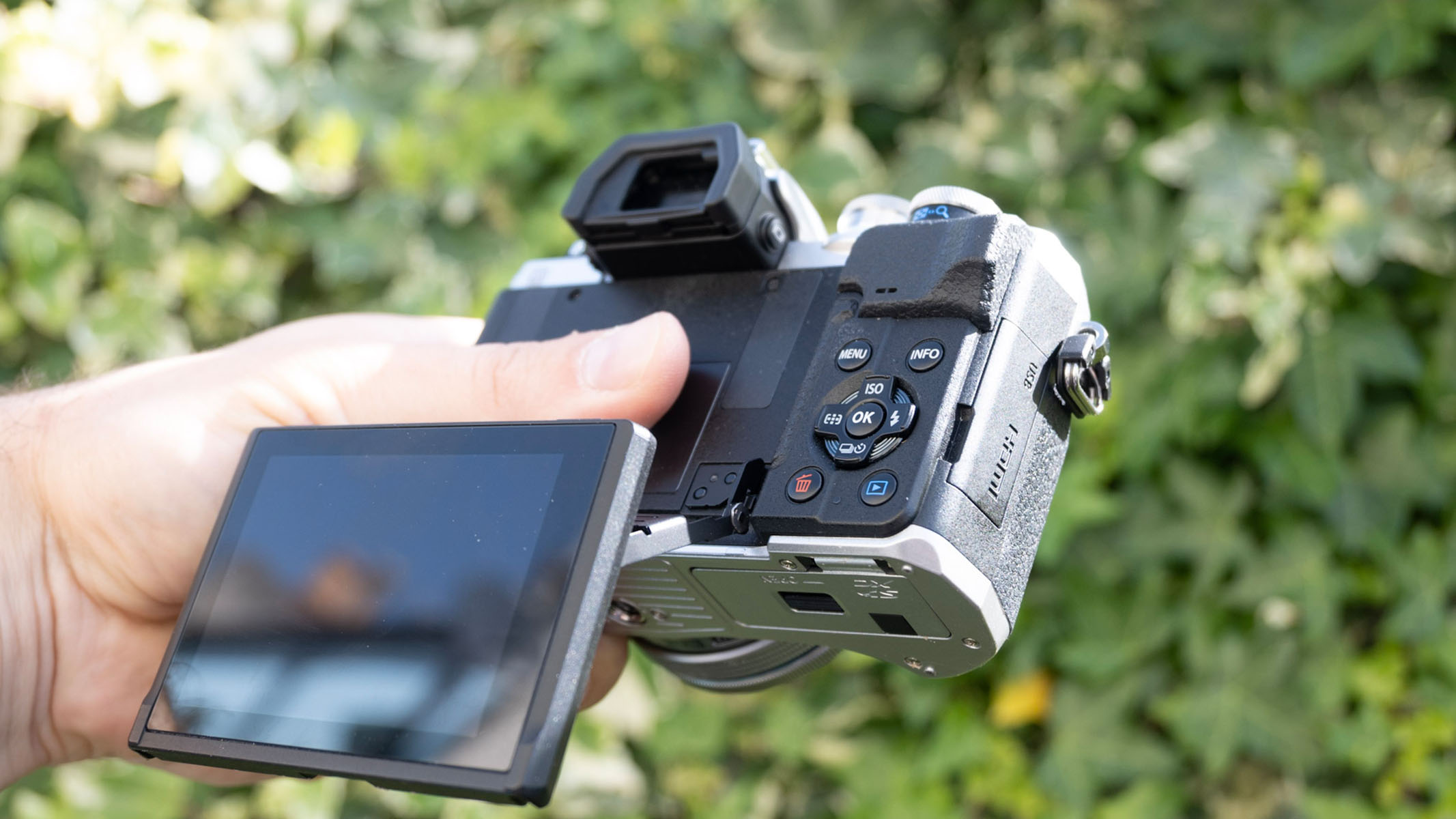
The operation of the camera is fairly straightforward from the word go, with the system getting going within a couple of seconds. Not the fastest necessarily, but speedy enough, and perfectly adequate for most day-to-day usage.
The quality of the tilting screen is particularly impressive, and we found that the clarity and resolution were spot on. By pressing 'info' on the back of the camera, you can cycle through the system's different displays. In auto mode, which we rarely felt a need to stray from, you can select screen only, a graph displaying live dynamic range and other touch-enabled options that allow for face tracking, screen-press shutter release and even an internal horizontal and vertical stabilization guide to enable you to rectify wonky positioning. All very intuitive, easy to use and genuinely useful to the user.
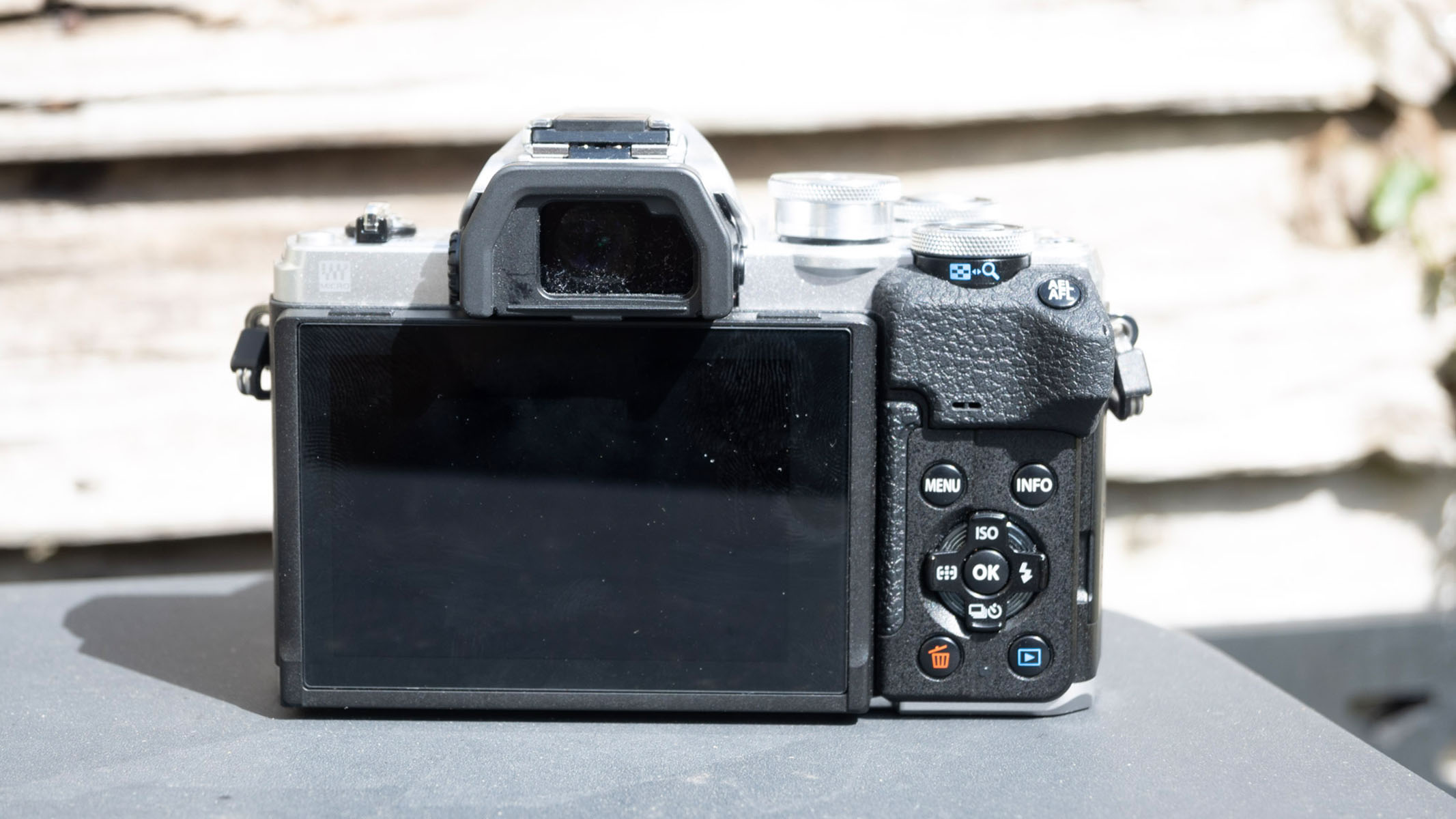
Olympus made much of its improved autofocus for the MK IV version of the camera, and we can safely say it delivers. The camera's autofocus ability is up there with the best in its class and didn't ever fail to lock on to motion at a reasonable distance. With 15fps in burst mode, for a small camera, it also delivered when it came to capturing the right moments - particularly with regards to street photography and wildlife.
The new 20MP sensor, uprated from 16MP in the previous incarnation, was also particularly impressive. Even with the inherent restraints of a small Micro Four-Thirds system, the camera responded well to a variety of different situations from landscapes to portraits. We think that most people upgrading from a smartphone will instantly notice the difference.
We tested the 14-42mm lens, which is well suited to everyday photography and is a good all-around option, but if we had one criticism it's that the maximum aperture is not particularly wide — only f/3.5-5.6 across the range of zoom. EV compensation does a good job of circumventing this somewhat, but if you're shooting the night sky, be prepared to fiddle a little bit with the settings to enable a good balance between shutter settings, stability, ISO and overall noise control. The 5-axis image stabilization does a great job, however, and in video mode, this somewhat comes into its own with effective steadying available for the 4K 30 fps option.
Olympus OM-D E-M10 Mark IV: Functionality
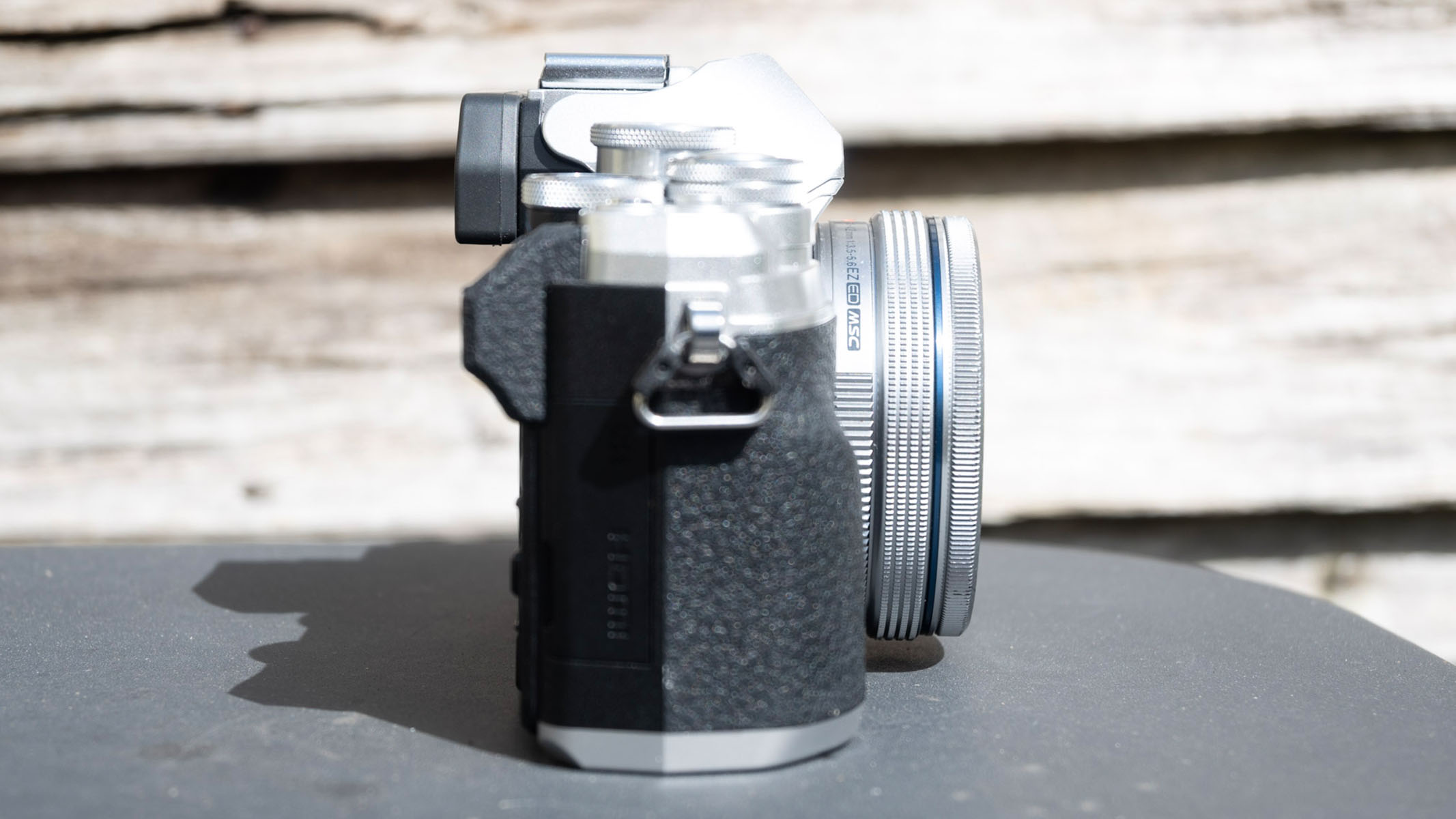
- Functional and easy to use
- Its portability makes day-to-day use a lot more straightforward
- A variety of modes bring depth to a beginner-friendly camera
Using the camera on a day-to-day basis is very straightforward and what we've come to expect from the modern era of entry-level, beginner-friendly cameras. For those just starting out, we liked the modes that offer a variety of different looks, from HDR filters to panorama modes and various other filters that would be familiar to most smartphone users.
Although the camera is best used in auto mode, more serious photographers have all the usual ISO, shutter setting and aperture options you'd expect, but we didn't feel they were particularly prominent — in many cases, this is a camera you'll rarely move off the 'auto' position on the selector dial.
With the speedy autofocus, twinned with its lightweight approach and build, using the camera when out and about is easy and with the small lightweight 14-42mm lens, as we tested, it can easily slip into a rucksack or side trouser pocket. This is one of the main selling points of the camera and will benefit those who are looking to upgrade from a smartphone — with the combination of portability and an easy, quick-to-grasp operation, beginners will notice the difference in their image taking almost instantly. For video lovers, we'd like to have seen a mic port which is a strange omission, but we can understand why Olympus took this step to remove the port to avoid stepping on models further up the range.
Should I buy the Olympus OM-D E-M10 MK IV?
If you're new to more complex cameras, would like to learn more about the art of photography or simply need something with 4K video and a bit more flexibility than your smartphone, we'd highly recommend the Olympus OM-D E-M10 MK IV.
As an entry-level system, it also has a focus on affordability and we were impressed by the deals available at the moment - not only is it a good value for money option, its size, portability and the fact that it's easy to carry around will certainly appeal to travel-conscious users. The design is stylish, with retro cues brought down from other Olympus systems over the years. Advanced or experienced photographers may feel frustrated quite quickly, but for most people who need a simple point and shoot, this is one of the best we've tested in a long time.
If this product isn't for you
The price range and feature set that Olympus have crammed into this tiny MFT camera does mean it sits in a crowded market. For this reason, we'd recommend doing some research into the range of small, compact systems before you make a purchase. Other cameras on the market, such as the Sony A6100, are better suited to sports photography due to their increased burst rate and for outright image quality, we'd also recommend looking at the Fujifilm X-T30 due to its 26.1MP sensor. If you're a vlogger or keen to explore videography in a more serious way, we'd also suggest having a look at something with a mic port, such as the Canon PowerShot G7 X Mark III.
Join our Space Forums to keep talking space on the latest missions, night sky and more! And if you have a news tip, correction or comment, let us know at: community@space.com.
Jacob Little is a photographer, writer and communications professional based in Bristol and Cornwall. His main inspirations come from outdoor adventure, travel, rural living and wild ways and crafts. Passionate about weaving the core principles of storytelling into his images, he approaches brand and copywriting work in much the same way. Conveying a compelling narrative is one of the main drivers behind much of his work.
